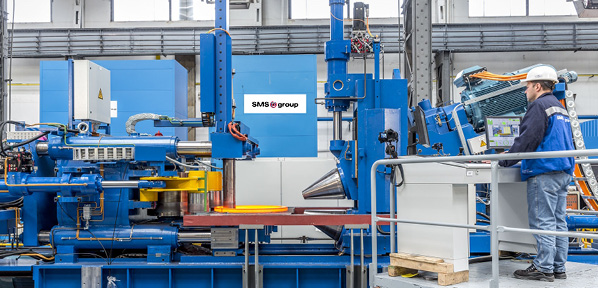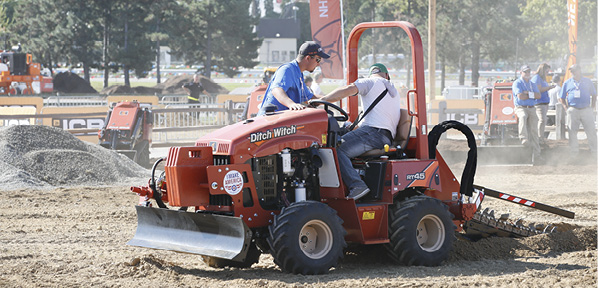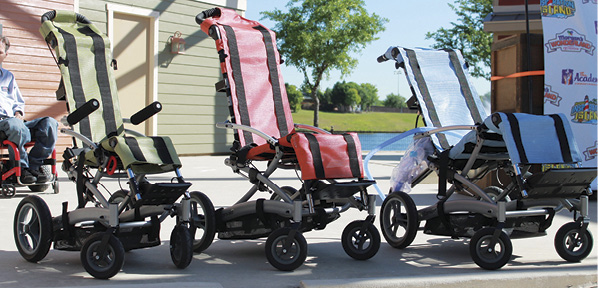FRAI Robotic Technologies Powers Automation

From WFL Millturn Technologies.
Different industries, series production, small batch sizes, a wide variety of machine tools and the uncertainty of many manufacturers as to whether the current product will still be in vogue next year or become a slow seller – all this calls for flexibility in production.
For automation, it means keeping pace with increasing demands to produce autonomously around the clock, be easy to use, and classify as Industry 4.0 compliant. In addition to the classic changeover of parts, automation also takes on the tasks such as tool change, parts transport, logistics, host computer functions, part tracking, and product history.
The more complex the task, the more elements you need from the “know-how kit,” which is what FRAI Robotic Technologies solutions successfully implemented under real production conditions. FRAI has already developed a large number of kit elements, including parts and position recognition, bin picking, reading and inscribing a data matrix code, parts contour monitoring, automatic gripper exchange, and jaw changes. Depending on the task in question, FRAI works with a network of partner companies that cover other aspects, such as host computer solutions.
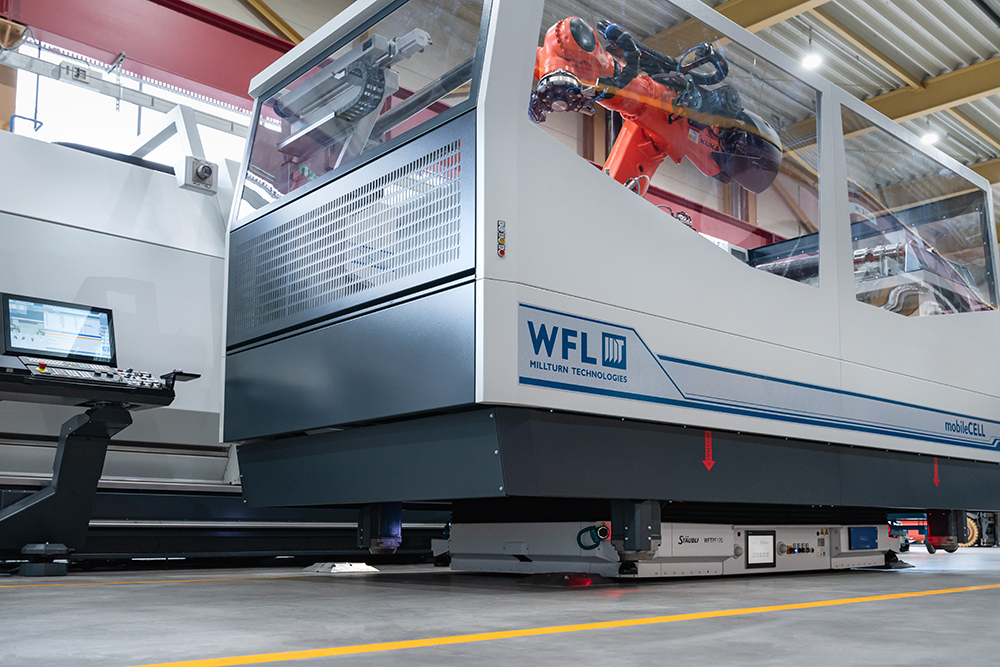
FRAI’s mobileCELL.
Multitasking in production
There are several mega and macro trends that will shape automation and virtually all industrial sectors in the coming years. First, there is individualization; there will be smaller series and more frequent product changes and innovations. Second, we have connectivity; everything is networked, and each component has a QR code that can be tracked through to recycling.
If you think about a smartphone, making a phone call is no longer its key function. The same is true of automation in the sense that transporting a workpiece from A to B is not necessarily the main task. Instead, the focus has shifted toward recognition, tracking, and multitasking. Camera recognition and gripper exchange systems combined with host computer solutions have become the core components of a flexible solution that is compatible with Industry 4.0. Globally, the trend will move toward a small cell solution with high intelligence and a high proportion of IT.
The above-mentioned trends and requirements call for overall networking, in particular for information data acquisition and evaluation. It is becoming increasingly important to acquire, process, evaluate, and pass on data. It allows users to optimize production, the sequence, and subsequently the capacity utilization, and it meets customer requirements such as 100% traceability and parts history. Improving the capacity utilization lowers unit costs, while higher quality lowers the cost of poor quality. These well-known requirements are becoming increasingly important. In the future, automation will be about using corresponding hardware to ensure a flexible material flow, handle components, and implement a variety of set-up processes.
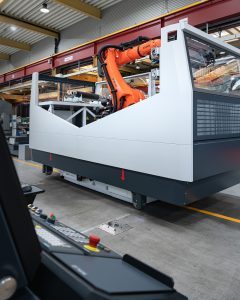
The mobileCELL is spatially unbound and can work at different machines and stations.
Automation as an overall package
When it comes to modern automation concepts, holistic customer support starts with the technical sales team. Experienced technicians must work hand in hand with visionaries, 3D designers, and software specialists to create the most useful concept for the customer. Companies must provide this support at the quotation stage and later for order processing.
It’s essential to develop high-tech expertise in your own company and continually adapt as development in these areas progresses at an incredible pace.
The mobileCELL from FRAI Robotic Technologies is a hybrid solution with a combination of wide-ranging functions and advantages. There was a time when the classic robot cell could only load and unload workpieces. Gripper exchange systems enhanced this basic function.
Due to the significant disadvantages of a location-bound robot cell and the costs for intralogistics tasks, the team discussed a solution that would produce advantages for the customer. This is how the concept of the mobile robot matured and was converted into a prototype.
The team created a generously sized automated guided vehicle with a robot cell design consisting of the robot, workpiece, tool gripper, along with buffer positions for workpieces and tools, and the necessary control and safety technology. The machine is freely accessible. It is not blocked or obstructed. The AGV collects the required tools and workpieces in the warehouse. It then travels to the front of the machine, locks itself in place on the floor, and exchanges parts or tools. The vehicle then moves away again and receives the travel instructions for the next machine. The space in front of the machine just loaded becomes clear again.
For a mobileCELL to be useful, there has to be a long enough cycle time, or there must be advantages such as flexible, internal transport with the use of several mobile robots. The travel paths must be suitably wide
(3 meters) for normal forklift operation. The wheels are designed to travel over expansion joints and slots. A virtual server and a WLAN network must be available, but that is also industry standard these days.
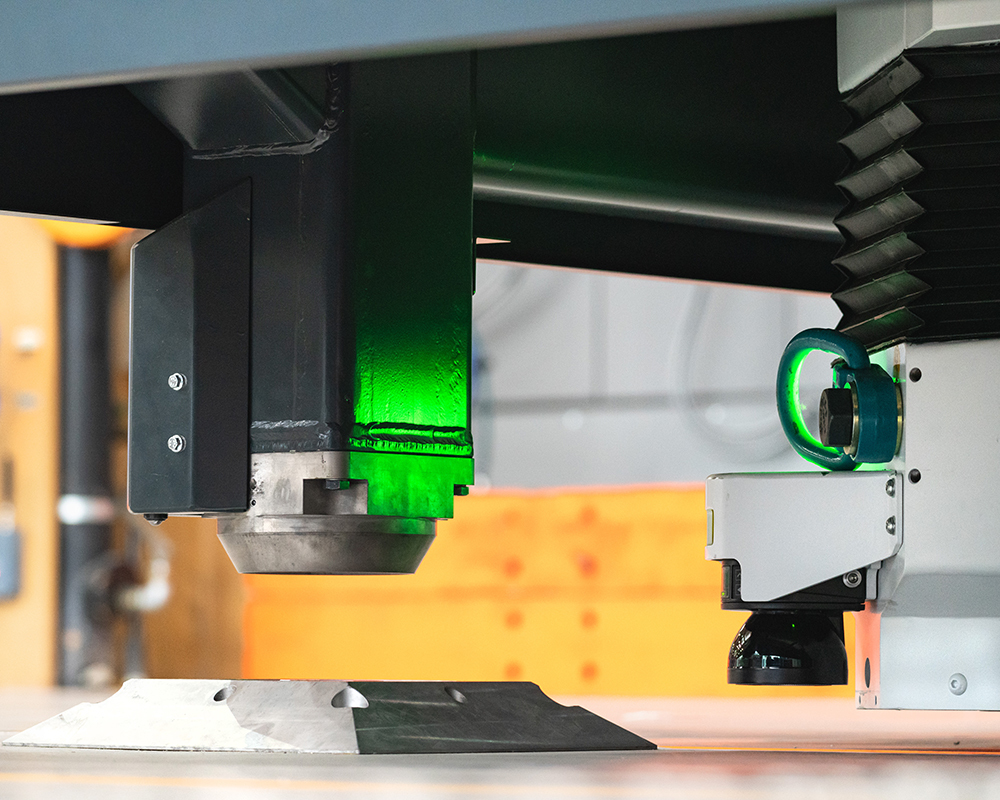
Here are some of the advantages offered by the mobileCELL:
- Saves space in front of each machine being served.
- Optimum access to the machine for operators and service personnel.
- One robot can be used for several machines.
- Interlinked machines and processes do not have to be in a line or next to one another.
- The storage area is in the low-cost warehouse space, not in the expensive production hall.
- Tools can be used universally on several machines and are not tied to individual machines.
- Intralogistics costs are reduced, as the AGV takes the parts to the next process or to the warehouse.
Compatibility with machines that could not otherwise be automated or for which a separate robot cell is not possible.
For more information, visit www.frai.at/en/ and www.wfl.at/.

